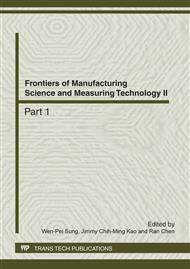p.1256
p.1260
p.1265
p.1270
p.1276
p.1280
p.1284
p.1288
p.1292
Control Strategy of Coiling Tension Based on RBF-NN Inverse System
Abstract:
Based on the study of coiler tension indirect control process, the purpose is to improve the control accuracy of the constant tension by the introduction of RBF neural networks and inverse system control theory. Depending on the physical characteristic of coiling tension control process, it could build the inverse system model for coiling tension control. By analyzing simulation results, this control strategy has great significance to the actual production.
Info:
Periodical:
Pages:
1276-1279
Citation:
Online since:
April 2012
Authors:
Price:
Сopyright:
© 2012 Trans Tech Publications Ltd. All Rights Reserved
Share:
Citation:


